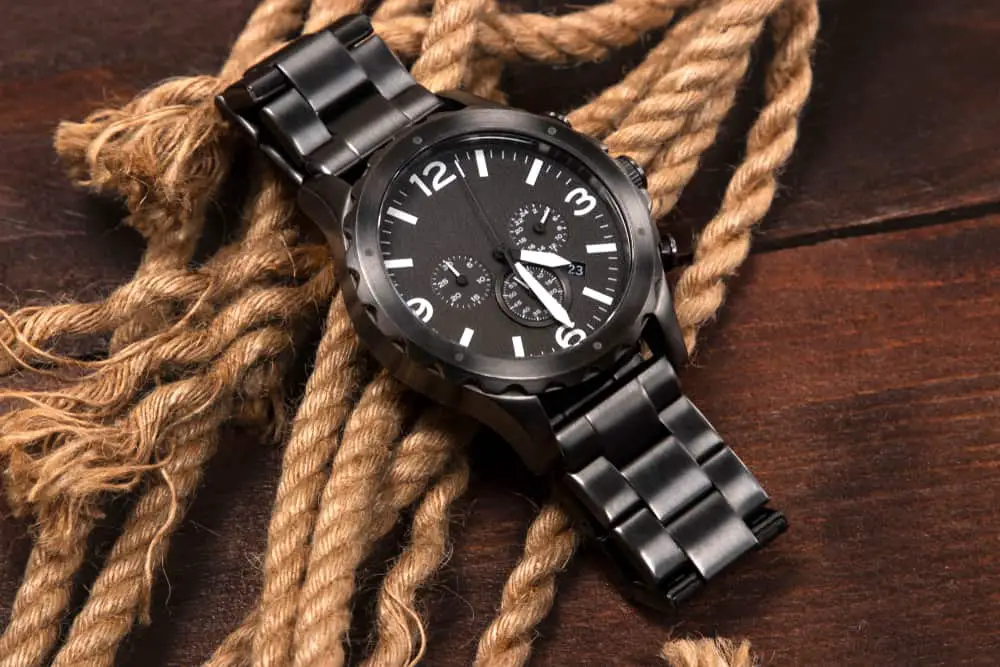We all know that watches are supposed to be able to tell the time. However, some models of watches do not have a second hand. The question now is why watchmakers would choose to omit the second hand of a watch?
The second hand of watches is removed for aesthetic or functional reasons depending on the watch’s design. Removing the second hand leaves more space within the watch’s dial that could be filled up with subdials, date windows, or other design parts.
For newer watch owners, it can get tricky figuring out if a watch with this type of design is worth getting. You will be missing out on some functionality for your watch since you won’t be able to tell time by the second, but watchmakers often design another function to make up for this removed part.
Why do some watches have no second hand?
To understand why watchmakers design watches without second hands, we first have to understand the context of watches in our modern day. Technology is ever-present now more than ever in this moving world. Nowadays, everyone can tell time on the go, whether that be through their cellphones, car clocks, billboards, etc.
Back then, watches in the 20th century were a must-have since such time-telling devices were not as standard as they are now. During this time, a second hand on a watch was at the height of its popularity, especially in the military, due to the need for accuracy and functionality in both work and life.
Since telling time is way more accessible now than before, watchmakers now have the freedom to remove a second hand, which frees up space both in the watch’s gears and the case itself. This opens up the opportunity to add other features or design the watch with a more specific aesthetic.
Benefits of watches with no second hand
Watches are primarily worn for two reasons which are either aesthetic reasons or for functional reasons. Here’s a breakdown of the different benefits to better help you understand why watchmakers would remove the second hand.
- Functionality
The most significant functional benefit of having no second hand on the watch is improving the visibility of the other parts of your watch. Having a constantly moving hand can make your dial quite dizzy to look at, especially if you have multiple sub-dials within your watch.
Subdials can be said to be the main selling point for a lot of watch models because of the diverse functionality that they can provide. Watchmakers can design subdials that can tell the time in other zones, indicate the week’s day, etc.
Subdials can also replace the function of a second hand by also telling time by the second. Although the main caveat is less visibility, and of course, you’ll miss out on other functions of types of subdials, at least you can still tell time by the second.
- Aesthetics
Watches are also considered jewelry pieces and, as such, also serve as decorative pieces of art that we wear. This is why each piece of a watch is carefully designed to look its best, whether that be the material of the markers, the shape of the hands, etc.
Now having additional spaces and removing a piece adds something to the design of a watch. The design principle is that the objective of eliminating something is done to shift focus onto something else.
For example, if you want more attention to the material of your hour markers, you’ll wish to have fewer hands which can be quite distracting.
Remember that these benefits only really apply if these are things that you look for in a watch. For newer watch users, choosing the features or design you want can get quite complicated, so there are always the standard designs, which often include a second hand, that you can test before you delve into more specifically designed watches.
Problems of watches with no second hand
Second hands in watches were placed and somewhat is a standard for modern watches for a reason, which is to provide a measurement of seconds for the user. This implies as well that there are certain features that you can miss out on from not having a second hand, such as:
- Hacking
Hacking is a feature of most watches that allows you to stop the movement of the second hand. This is done through a lever that acts as a brake for the gear that moves the second hand.
This is done to synchronize watches often or for users to time something from the “12” hour marker or any hour marker of their choosing.
- Telling time by the seconds
There are situations wherein you might have to tell time by the second, which can be expected depending on your work. Police officers, military personnel, medical fields, sports, divers, and other fields that require precision in telling time will need to have a watch with a second hand.
Even in day-to-day life, activities such as cooking food, traveling, or personal exercise may have us looking at our watches to tell us how many seconds have passed.
- Watch Maintenance
The movement of the second hand of your watch is often a good indicator of how well it is working. Since the second hand is moving the most and the fastest, its gear is also moving the most, which allows us to better look out for any problems or signs of deterioration from our watches.
The watch should match the user and meet their time-telling needs. Of course, we may not need or use these features regularly, but it’s always good to have them on hand because
you never know when you’ll need them.
Conclusion
Some watches do not have a second hand for design or functionality reasons. Second hands are essential for watch wearers that need to be able to tell time precisely, but they are not as crucial for most users.
Sources
- https://www.gearpatrol.com/watches/a34132697/further-details-hacking-stop-seconds-watches/
https://duyenthuy30397.medium.com/why-does-a-watch-need-a-second-hand-1898a6e3428b - https://www.truefacet.com/guide/what-are-subdials-and-what-do-they-do/#:~:text=Subdials%20are%20the%20mini%2Ddials,%2C%20calendars%2C%20and%20GMT%20watches.
